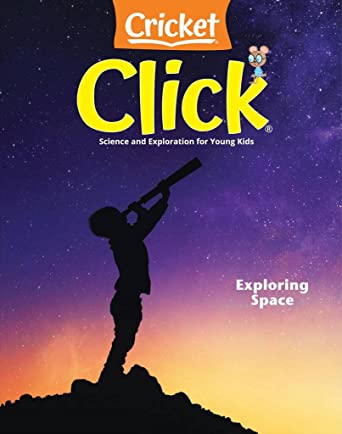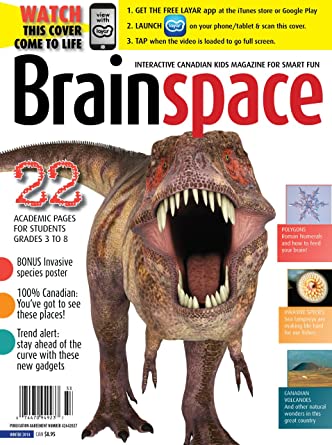Exposing kids to diverse science topics is so important—you never know what will spark a new interest or passion for a child. Print magazines are an awesome way to show kids lots of scientific possibilities. We’ve pulled together this amazing list of the best science magazines for kids of all ages to get you started.
(Just a heads up, WeAreTeachers may collect a share of sales from the links on this page. We only recommend items our team loves!)
1. Click (Ages 4–7)

Younger kids love the predictable structure of this magazine that includes interesting science and other informational articles, comics, and project directions.
Buy it: Click on Amazon
2. Ranger Rick Dinosaurs (Ages 4–8)

If you’re looking for the best science magazines for kids who love paleontology, you’ll want to add this one to your list. Each issue focuses on a particular type of dinosaur via articles, diagrams, comics, and more.
Buy it: Ranger Rick Dinosaurs on Amazon
3. Zoobooks (Ages 6–10)

This is one of the best science magazines for kids who adore wild animals. Each issue centers on a featured animal and goes in-depth with articles, illustrations, photos, and activities. Great examples for animal nonfiction writing assignments.
Buy it: Zoobooks on Amazon
4. Ask (Ages 6–11)

The publisher claims this is “the best magazine for children who like to ask a lot of questions” and it’s totally true! It offers detailed science articles for kids who like to go deeper, as well as quirky shorter pieces, fun puzzles, experiments, and project directions.
Buy it: Ask magazine on Amazon
5. Whizz Pop Bang! (Ages 6–10)

This British import is full of energy! With comic-book-style illustrations and catchy headlines, each issue focuses on a high-interest science topic relevant to kids’ lives. You can subscribe or order bundles of back issues, which are perfect for stocking your classroom library quickly.
Buy it: Whizz Pop Bang! on whizzpopbang.com
6. OWL (Ages 9–13)

This future-focused choice is great for tweens who love reading about new discoveries, technology, and inventions. Interviews featuring both adult and kid scientists will inspire science-loving kids to dream big.
Buy it: OWL on Amazon
7. Beanz (Ages 9–14)

This is one of the best science magazines for kids who are into coding—or to introduce students to the possibilities of computer science. We love the variety of article topics. Yes, there’s a monthly Minecraft column and wow-worthy tech gadget features, but there’s also lots of cool STEM history and current events, introductions to different programming languages, and plenty more.
Buy it: Beanz on Amazon
8. Smore (Ages 9–14)

Each issue covers science-related current events and showcases ideas from different branches of science. We especially love all the interviews and profiles that introduce kids to STEM careers, and the efforts to highlight women’s STEM achievements.
Buy it: Smore on Amazon
9. Muse (Ages 9–14)

Articles inform kids about current science topics and the social issues connected to them. Fun Q&A pages, jokes, and activities balance out the longer feature articles.
Buy it: Muse on Amazon
10. Brainspace (Ages 8–14)

This innovative Canadian publication calls itself an “interactive print magazine.” Readers can download a free app and scan icons throughout the printed pages for related online extras—great to motivate reluctant readers or for kids who want more. Articles cover a range of science topics that could help you extend your work with curriculum standards in interesting ways.
Buy it: Brainspace on Amazon
11. Oyla (Ages 11–16+)

With over 100 ad-free pages per issue and articles that tackle a slew of engaging feature topics or questions, this is definitely one of the best science magazines for kids we’ve seen to keep older kids (or grown-ups!) reading and thinking. We like how the format and design mimic popular adult magazines.
Buy it: Oyla at oyla.us





















